OUP Neuro Hub: Neurocritical care collection
In the second collection of OUP’s Neuro Hub, we’ve organized more than 70 book chapters, journal articles, and entries from our reference products on neurocritical care.
Start readingPodcasts
Altered brain glucose metabolism as a mechanism for delirium?
Delirium is a common condition with significant impact on patient outcome. This episode discussed potential intrinsic brain mechanisms that may underly delirium. The team explores the evidence that delirium is more than just a systemic process that extends into the brain but may involve pathophysiological alterations of brain function.
Are there differences in the immune response among individuals of Black ethnicity with multiple sclerosis?
This episode discussed racial differences in antibody response to natalizumab treatment for individuals of black ethnicity with multiple sclerosis. Further, they consider potential mechanisms which may underly differences and the implications on treatment.
Exploring a genetic basis for disordered speech and language: FOXP2 mutations and striatal neurons
This article explores a potential genetic basis for disordered speech by a mutation in the transcription factor FOXP2. This was discovered in KE family members with speech disturbances was a landmark example of the genetic control of vocal communication in humans.
The BRAIN podcast
The BRAIN podcast is the official podcast of Brain and Brain Communications highlighting the rich and diverse neuroscience published in the journals.
Video Abstracts
Watch more videos from Brain Communications
Watch more videos from Brain Communications
Watch more videos from Brain Communications
Watch more videos from Brain Communications

Video abstracts
Discover Brain Communications research in a different way with author videos. Find out about some of the latest neurology research, directly from the authors, in short and accessible videos.

Be the first to know when content publishes
Register to receive periodic email alerts to be informed when Brain Communications articles are published online.

Open for submissions
Brain Communications is the open access sister journal to Brain. We publish high-quality preclinical and clinical studies related to diseases of the nervous system or maintaining brain health.
Artificial Intelligence in Translational Neuroscience
Explore a special collection from Brain Communications highlighting the use of AI in translational neuroscience.
Reproducibility in Translational Neuroscience Collection
Brain Communications have collated a series of articles to delve into the topic of reproducibility. Discover how they are enhancing rigour and reproducibility in translational neuroscience.
Read more collections
Explore specially curated collections of articles from Brain Communications.

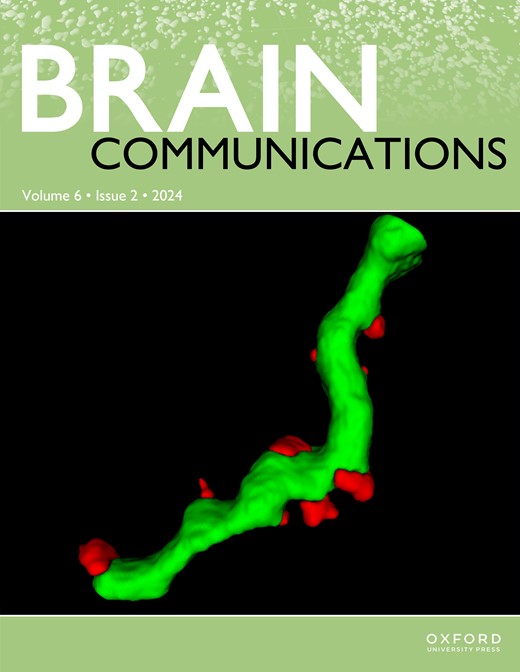
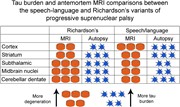 Orlandi et al. show that tau burden and MRI volume in progressive supranuclear palsy speech/language are greater in the frontal cortex but lower in subcortical/brainstem nuclei than Richardson’s syndrome. Clinical variability is, therefore, related to shifts in burden across a network of regions.
Orlandi et al. show that tau burden and MRI volume in progressive supranuclear palsy speech/language are greater in the frontal cortex but lower in subcortical/brainstem nuclei than Richardson’s syndrome. Clinical variability is, therefore, related to shifts in burden across a network of regions.
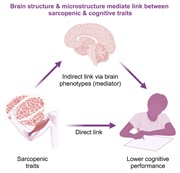 Gurholt et al. report that traits relevant to sarcopenia, a muscle disorder linked to body and brain impairments, are associated with lower general cognitive performance and brain structure phenotypes. Sensorimotor brain structures mediated the link between sarcopenic and cognitive traits. The findings provide essential cues for understanding the sarcopenia–dementia link.
Gurholt et al. report that traits relevant to sarcopenia, a muscle disorder linked to body and brain impairments, are associated with lower general cognitive performance and brain structure phenotypes. Sensorimotor brain structures mediated the link between sarcopenic and cognitive traits. The findings provide essential cues for understanding the sarcopenia–dementia link.
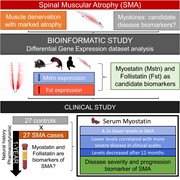 De Albuquerque et al. report the potential of serum myostatin and follistatin levels as biomarkers for spinal muscular atrophy, encompassing research with animal models and humans. Myostatin levels were reduced in the disease, correlated with a disease severity and progressed over time, suggesting its utility as disease severity and progression biomarker.
De Albuquerque et al. report the potential of serum myostatin and follistatin levels as biomarkers for spinal muscular atrophy, encompassing research with animal models and humans. Myostatin levels were reduced in the disease, correlated with a disease severity and progressed over time, suggesting its utility as disease severity and progression biomarker.
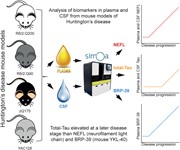 Bondulich et al. show that levels of NEFL, total-Tau and BRP-39 in plasma and CSF will provide translatable readouts for preclinical studies in Huntington’s disease mouse models. Further analysis in mice may shed light on the underlying pathologies leading to elevated biomarker levels.
Bondulich et al. show that levels of NEFL, total-Tau and BRP-39 in plasma and CSF will provide translatable readouts for preclinical studies in Huntington’s disease mouse models. Further analysis in mice may shed light on the underlying pathologies leading to elevated biomarker levels.
 Leister et al. report that immunoproteasome deficiency results in spontaneous seizures and other brain pathologies such as tau hyperphosphorylation, degeneration of Purkinje cells and increased anxiety in aged mice. This suggests that the upregulation of immunoproteasomes during ageing affords protection from the exaggerated accumulation of protein aggregates and epilepsy development.
Leister et al. report that immunoproteasome deficiency results in spontaneous seizures and other brain pathologies such as tau hyperphosphorylation, degeneration of Purkinje cells and increased anxiety in aged mice. This suggests that the upregulation of immunoproteasomes during ageing affords protection from the exaggerated accumulation of protein aggregates and epilepsy development.
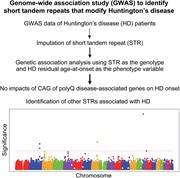 Hong et al. determined whether polyglutamine disease-associated CAG repeats modify Huntington's disease (Huntington’s disease). Analysis of typed and imputed tandem repeats did not support significant associations between the sizes of CAG repeat of other polyglutamine disease-causing genes and Huntington’s disease age-at-onset while revealing potential modification signals for tandem repeats at other loci.See J. Hannan (https://doi.org/10.1093/braincomms/fcae047) for a scientific commentary on this article.
Hong et al. determined whether polyglutamine disease-associated CAG repeats modify Huntington's disease (Huntington’s disease). Analysis of typed and imputed tandem repeats did not support significant associations between the sizes of CAG repeat of other polyglutamine disease-causing genes and Huntington’s disease age-at-onset while revealing potential modification signals for tandem repeats at other loci.See J. Hannan (https://doi.org/10.1093/braincomms/fcae047) for a scientific commentary on this article.



